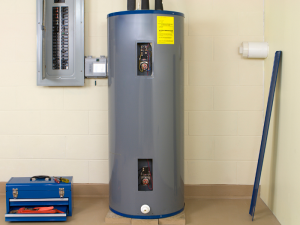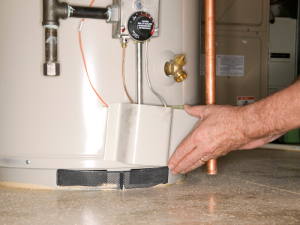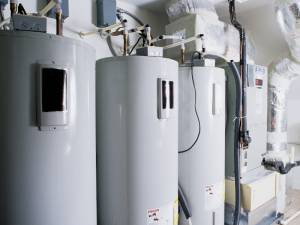If you have ever had to have a water heater replaced or deal with a water heater full of mineral buildup, you know how damaging the mineral and sediment buildup can be. Here is an article if you would like to read more about water heater corrosion.
Even though it is not like a traditional water heater, where the water is constantly sitting there, allowing the minerals and calcium to build up, a tankless water heater can still develop similar issues.
It is so important to flush your water heater at regular intervals. But you may not know how to flush a tankless water heater in the right way, so this article will cover everything that you will need to know.
What does it mean to flush your tankless water heater?
Whether you have a standard traditional water heater or a tankless water heater, your system will be subjected to harsh mineral and calcium buildup. Taking the time to flush your tankless water heater will mean that you drain the water out of it, run something through it that will help clean out all the excess minerals, and then put it back into operation. This should be done at least annually to ensure that your water heater will continue to operate correctly.
What tools and chemicals will you use when flushing a tankless water heater?
This may suggest the first question of what chemical you will use. Well, there are plenty of commercial chemical options. But another option is to use white food-grade vinegar. You will want to consult the operation manual of your specific water heater to see what it recommends. Some water heaters may recommend a particular commercial cleaning product. You will also need a few other things:
- A submersible sump pumps
- 5-gallon bucket
- Two stainless steel washing machine hoses
- Four gallons of white food grade vinegar or commercial chemical descale
How to flush a tankless water heater?
Preparation:
Before you start, you will need to ensure that your tankless water heater has flush valves already installed. These will resemble hose bibs and will have caps on them. If your water heater does not have a set of these installed, you will need to have them installed, which you should have a professional do.
You will also need to ensure that your water lines and gas line, if applicable, has isolation valves, commonly referred to as shut-off valves. If your system does not have these, then it is also something that you will need to have a professional install for you.
You will first need to turn the gas or electricity off that is feeding your water heater. If it is gas, it will be the isolation valve, or if it is electric, it will be a breaker in your panel. It is essential to double-check that these are turned off. Make sure the gas isolation valve is fully shut or use a voltage tester to ensure no electricity is present in the unit.
You will then turn off the cold water that feeds the water heater with its primary water source. Then you will turn off the hot water side that provides your home with hot water. This will be done with the isolation valves for each water line.
You will then locate and open the pressure relief valve on the unit. This will relieve any built-up pressure and help prevent you from getting hurt.
Take your two hoses, screw one on the cold side flush valve and the other on the hot side flush valve. Then you will connect the cold hose to your submersible sump pump that will be used as a tankless water heater flush pump and set the pump in the bucket. Set the free end of the other hose in the bucket with the pump.
Flushing:
Fill the bucket up with your four gallons of vinegar, and plug your pump in. Assure that the vinegar is cycling as it is supposed to, so you do not damage your pump. Let it run for at least 60 minutes. If the pump cannot pump at least four gallons a minute, you will need to run it for longer. If you are using vinegar, it is recommended to run it for 90 minutes.
As the chemical or the vinegar cycles through the system, it will break down the mineral buildup and scale that forms inside your water heater. This will prevent lines from getting clogged, losing water pressure, and losing energy efficiency.
After the allotted time limit, you will shut the pump off, unhook the hose from the cold-water service port and make sure it is closed. Then you will dump out your vinegar, put the hot water hose into your bucket and open the cold-water isolation valve. This will cycle fresh water through the system, getting any excess chemicals or vinegar out without feeding it to the rest of your home. You will want to do this for about ten minutes to ensure that your system is cleaned out.
You will shut the cold-water isolation valve. Remove and clean any removable filters to ensure they are not full of scale, and then reinstall the filters. Remove the hose from the hot water service port, and make sure the service port is closed.
Finish:
Replace any panels and covers that you may have removed. Pick up all the components that you used for the flush. Make sure that any filters you removed are secure and do not seem as though they will leak.
Open the cold-water isolation valve and then your hot water isolation valve. Then you can open your gas line isolation valve or turn the electricity back on to your tankless water heater.
Once you are sure that the water heater is beginning to operate as it should, then you will want to go to multiple fixtures throughout your home and turn the hot water valve on. Allowing the air to work its way out of the lines ensures that they are all working correctly.
Final thoughts
Now that you have learned how to flush a tankless hot water heater, it will be best to flush your tankless water heater out at least once every twelve months. It is more important than doing a flush to a traditional water heater because the components of a tankless water heater are much smaller. Doing an annual water heater flush will ensure that your water heater continues to work correctly, that you do not have reduced hot water pressure, and that you maintain the same efficiency that you have grown to expect. If you have questions about increasing your water pressure, read the linked article.
An annual flush is a necessity. If flushing your tankless water heater is not something that you are comfortable with, or if you still have questions about how to flush tankless water heaters, or you feel that you would rather have someone with experience do it than you should call a professional that specializes in water heater services. They will be able to examine your unit with an experienced perspective and ensure that it is flushed and that all the components are clean and working the way they should. We always recommended that you hire an experienced professional to look at the gas components annually.




